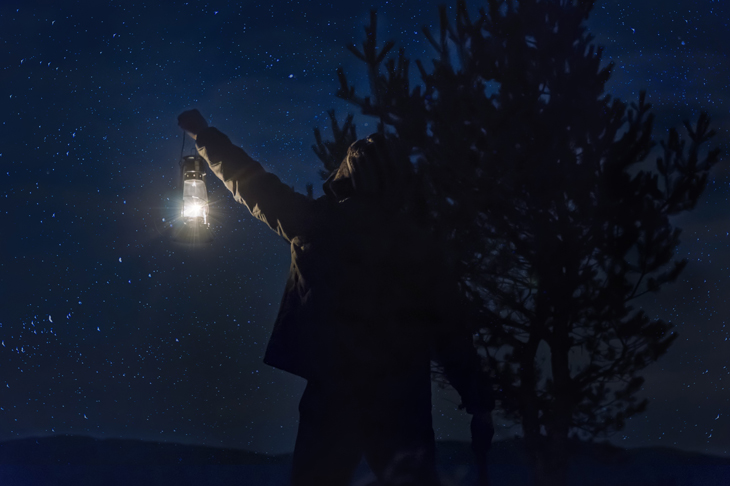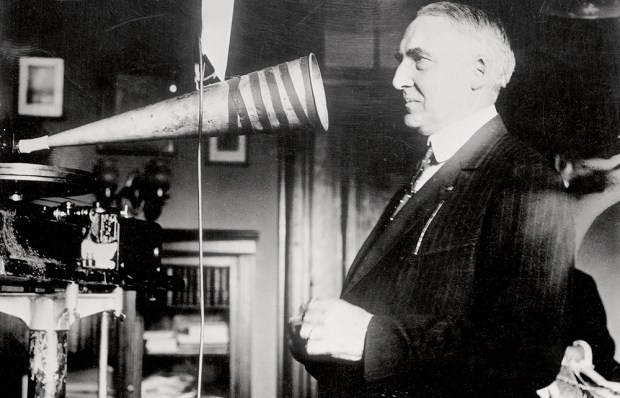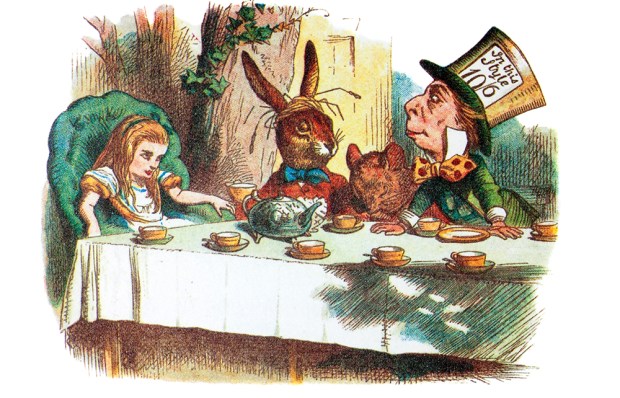‘Does a dark lantern give out black light?’ asked my husband as if in delirium. He was reading a book I would have been enjoying if he hadn’t grabbed it. It is called 1776, being about London in that year, when Britain was losing its Empire of America. It’s by Justin Lovill, who ten years ago gave us an entertaining miscellany called Ringing Church Bells to Ward off Thunderstorms.
Anyway, my husband’s question concerned an incidental reference to a dark lantern, spelled lanthorn in the newspaper source quoted. It made me realise that I have never understood this apparatus. The spelling lanthorn is a piece of popular etymologising, based on lanterns almost always, before the 19th century I think, glazed with horn. Lanthorn was no semi-literate aberration, but a spelling used by respectable writers, including the co-author of the original Spectator (1711-12), Joseph Addison. Frederick Marryat, whom we always referred to as ‘Captain Marryat’, the author of The Children of the New Forest, still regarded in my young day as standard fare for children, happily used the spelling lanthorn in the 1840s.
Like lamp, lantern comes from lampein, the ancient Greek for ‘shine’. (I’ve mentioned before the 16th-century German Protestant Johannes Oecolampadius, who adopted a learned Greek version of his original name Hussgen or Hausschein.) The historical process that produced the Latin lanterna from lampein was by the derivative noun lamper acquiring the suffix of the Latin lucerna (‘a lamp’, implicitly a clay oil-lamp).
A dark lantern is simply one that is light-proof except for a shutter that can be slid open to shine a beam. While we’re at it, I was also in some confusion about muffled oars. Could the blades be wrapped to stop the sound of splashing? No, I find that the part which sits in the rowlocks is muffled. That part is called by some the loom, though others mean by loom the whole shaft, while Captain Marryat limits it to the part inboard and William Falconer, whose long poem The Shipwreck (amplified in 1764) is accompanied by a detailed diagram of a ship and its rigging, means by loom only the handle of an oar. It seems the lantern of technical language can be dark indeed.
Got something to add? Join the discussion and comment below.
Get 10 issues for just $10
Subscribe to The Spectator Australia today for the next 10 magazine issues, plus full online access, for just $10.
You might disagree with half of it, but you’ll enjoy reading all of it. Try your first month for free, then just $2 a week for the remainder of your first year.















Comments
Don't miss out
Join the conversation with other Spectator Australia readers. Subscribe to leave a comment.
SUBSCRIBEAlready a subscriber? Log in